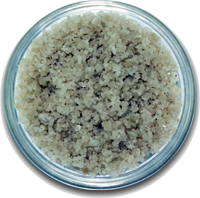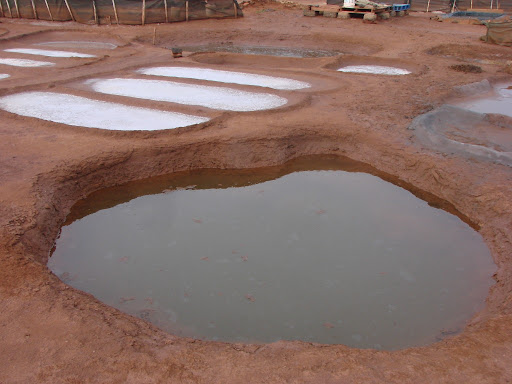It has been noted many times that the human blood supply, as well as our sweat and tear secretions, have the same salinity as the world's seawater. This is not a coincidence, for all animal life originally began in the earth's liquid incubators, the oceans, and due to this the processes involved need to maintain that salinity in the near-liquid meat-bags that are our bodies. The odd thing is that such salt is highly toxic to nearly all land-dwelling plant life.
While there are many chemical substances classified as "salts" by science, it is Sodium Chloride that is the main salt needed by our bodies, and the main salt in our oceans. A salt, in chemistry, is defined as the product formed from the neutralisation reaction of acids and bases ( see HERE ). Our common table salt, NaCl, or sodium chloride, is an inert, unreactive compound, which is quite different from the properties of it's two main constituents. Na (Sodium) and Cl (Chloride) are highly reactive, and quite dangerous to wield without proper equipment and knowledge. The reaction between Na and Cl is catalysed by H2O, plain old water. Here is a video example of how highly energetic these reactions can be.
As far as food goes, salt is mainly processed in industrial settings nowadays. There are many companies out there still making salt the old fashioned way, or mining it from huge salt deposits from long-dead oceans. The New York Times has a great story on one such operation in the southern coast of Portugal. There, a clean, beautiful, soft, white salt is produced through the ancient method of evaporation.

French sea salt is light grey in color, which comes from the summer rains disturbing the evaporation pond waters in French salt works, and stirring up the grey clay silt below.

Hawaii makes a reddish sea salt called Alaea, which gets it's color from the red clay in which the seawater is evaporated.

Himalayan salt is mined from huge deposits and has a pink quality. Huge blocks can be removed, since the Himalayas are composed of oceanic bedrock, which, due to the collision between the Indian plate and the Asiatic plate, continues to drive the mountains of the Himalayas ever higher into the sky.



No comments:
Post a Comment